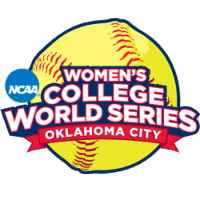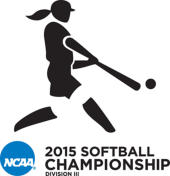





© 2015, 2018 Varsity Fastpitch. All Rights Reserved. The information provided is an estimate. Varsity Fastpitch and its creators are not responsible for errors.
Selecting an NCAA Division

Our Mission:
To help high school softball
players find their way through the
complex and confusing maze of
identifying careers, finding
colleges that are a good match,
and navigating through the
recuiting process.
One topic that players and their families want more information about is details about the differences
between the NCAA divisions. Playing for a Division 1 school is very different than playing for a
Division 3 school. Some of the key differences are listed below. Please keep in mind, that some
D2 and D3 schools can easily beat some D1 schools, so it isn’t all about performance. Some
superstars decide they want to concentrate more on their education than on softball and
select a D3 school. It all depends on what is the best fit for you, the player. Not your parents.
Not your friends. You. When you play for a D1 school, softball is your job and your education
is considered secondary. When you play for a D2 school, softball is your part-time job and
your education is considered as important as softball. When you play for a D3 school, your
education comes first and softball is more of a hobby. These are gross generalizations, but they do
drive home the point about sport vs. education.
Division 1:
Must meet minimum financial aid awards and not exceed a maximum award.
A high level of competition – winning is very important.
Good choice if you want to make sports your career.
Approximately 295 Schools are designated as D1 with softball programs
Typically have the best athletic facilities
Sport is the athletes “job” and education is somewhat secondary.
The sport played will leave little time for any other college life.
Must take > 16 core courses over 4 years
Must have > 1020 on SAT
Ivy League schools compete at the D1 level, but do not offer athletic scholarships. Instead they offer
financial aid, grant packages, and need based aid.
Softball is an equivalency sport and there are only 12 scholarships available that can be divided up as the
coach sees fit.
Must maintain a minimum 2.3GPA
Classes will be missed for games, road trips, and practices.
Early morning practices or training programs are expected
Off-season training programs are required
Most of the people you will be spending your time with during off hours will be your teammates.
Generally expected to pitch at 60mph+ with top schools requiring > 63mph
Time to first base is approximately 2.9 seconds
Catcher pop time 1.8 seconds
Pitchers receive larger scholarships than other players
53% receive some level of athletic scholarship
Graduation rate is 81%
Average school size = 12,900 students
Typical Schedule: 34 home games, 10 road trips (30 games) plus conference championship, regionals,
super regionals, and WCWS. Games start early February and the regular season concludes early May.
Successful teams play through early June.
Division 2:
There are maximum financial aid rewards that cannot be exceeded
Many D2 athletes pay for school via scholarship money, grants, student loans and via jobs they either find
themselves or through assistance at the school
Slightly less competitive than D1 – winning is not everything.
Good choice if you don’t want the pressure of Division 1
Good choice if you are not trying to make sports your career.
Approximately 264 Schools are designated as D2 with softball programs.
Must take > 16 core courses over 4 years
Must have > 840 on SAT
Must maintain a 2.0GPA
Classes may be missed for games, road trips, and practices.
Off-season training programs are required
SAT is required and students must meet minimum requirements
Generally expected to pitch at 58mph+
Time to first base is approximately 3.0 seconds
Catcher pop time 1.9 seconds
Pitchers receive larger scholarships than other players
Softball is an equivalency sport and there are only 7.2 scholarships available that can be divided up as the
coach sees fit.
56% receive some level of athletic scholarship
Graduation rate is 71%
Average school size = 4,200 students
Typical schedule: 22 home games, 10 road trips (24 games) plus conference championship and playoffs.
Games start mid-March and the regular season ends late April. Successful teams can play through mid-
May.
Division 3:
Student athletes do not receive financial aid related to sports
Financial Aid available as: academic scholarships, leadership scholarships, grant money, and
needs based financial aid. Aid is not based on athletic ability or health.
Low level of competitiveness.
Good choice if you are looking to focus on class work and still be able to play sports
Less travel than D1 and D2.
Good choice if you are not a star player.
Good choice if you aren’t looking for scholarship money
Good choice if you are not trying to make sports your career.
Approximately 392 Schools are designated as D3 with softball programs.
Academic life and community service are more important than athletics.
Even though D3 schools do not provide Athletic scholarships, in many cases they can provide packages
that provide even more financial aid than D1 or D2 schools can.
SAT is not required
Offers a later recruiting cycle
Generally expected to pitch at 55mph+
Time to first base is approximately 3.1 seconds
Catcher pop time 2.0 seconds
75% receive some level of academic grant or need based scholarship averaging $13,500/year
Graduation rate is 87%
Average school size = 2,600 students
Typical schedule: 20 home games, 6 road trips (18 games) plus conference championship and playoffs.
Games start early February and the regular season ends late April. Successful teams can play through
mid-May.
Current high school students need to seriously consider the type of school they want to attend. If you decide to
attend an NCAA member school, then the division selected will dictate much of your college life. If you want a
career in sports, then D1 is the way to go. If you want a career that supports sports, either D1 or D2 might be
appropriate. If you want a career outside of sports then D2 or D3 might be appropriate. If you spend some time
now thinking about what you want to get out of your college experience, you may save yourself a lot of
heartache later if you get it wrong and go to the wrong division of school.
Another way to better understand the differences between the divisions is to speak with a player from each
division. If you currently play travel ball, speak with your organization about providing contact information for
past players from the three different divisions. Be sure to ask about what a typical day is like during both softball
season and off-season. This will provide you with the best idea of what your life may be like in college as a
student athlete softball player.
















































































